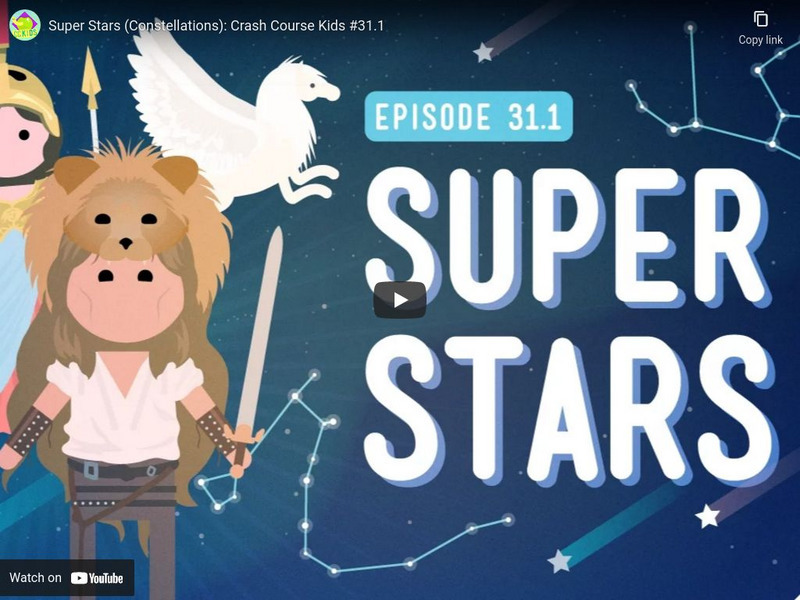Hi, what do you want to do?
Bridgeman Arts
Scientists looking at outer space from telescopes. France, 1940s
Clip 4 from the 1940s French film 'Au Dela Du Visible', exploring scientific work undertaken at the Palais de la Decouverte (Discovery Palace) in Paris, and experiments relating to the theme of outer space. (1943-1944).
Bridgeman Arts
UN Meeting in America, with Dakotas, Constellations, and The York
Footage from the 1940s of airfields and various aircrafts in flight, including the DC-4, Constellation, York, and the Lancaster bomber, as well as scenes outside a UN meeting in America.
Bridgeman Arts
The Wonders of the Creation and the Curiosities of Existence by Zakariya 'Ibn Al-Qazwini - Part 2
The Wonders of Creation and the Oddities of Existence was compiled in 1270 by Zakariya Qazwini, a judge living in Wasit in Iraq. It remained popular reading for centuries. It is an illustrated compendium, which describes the many marvels...
Bloomberg
How Smaller Space Companies Can Compete With Bezos, Musk
Aug.25 -- Chad Anderson, Space Angels chief executive officer, discusses investing in space ventures. He speaks with Bloomberg's Emily Chang on "Bloomberg Technology."
Crash Course
Galaxies, Part 2
Worlds within worlds! Journey to galaxies near and far with a thought-provoking video. Young astronomers learn how scientists detected very distant galaxies using their electromagnetic signatures far outside the visible range. Other...
Crash Course
The Milky Way
Where does Earth fit in the grand scheme of things? Find out in an intriguing video filled with facts and beautiful images! Learners journey to the center of the Milky Way to discover how our galaxy works. The narrator describes the...
Crash Course
Nebulae
A star is born! Introduce young astronomers to the characteristics of nebulae in a narrated video. Discover what they are made of, why some reflect light and others glow on their own, and the locations of several notable nebulae. The...
Crash Course
Star Clusters
Take your class to the next level of star gazing and introduce them to star clusters with an entertaining video. The narrator explains the differences between open and globular star clusters. Pupils also discover the ages and orbiting...
Crash Course
Meteors
When you wish upon a shooting star ... you're actually pinning your hopes and dreams upon a meteor! Science scholars discover the origin of these dazzling falling bodies in a video that's sure to captivate. The narrator explains the...
Crash Course
Binary and Multiple Stars
Twinkle, twinkle little star(s)? Many of the stars above us are not alone! The narrator in the video explains the delicate balance present in binary and multiple star systems. Pupils learn about stars that orbit one another—and even...
Crash Course
Naked Eye Observations
For thousands of years, humans observed the night sky without the help of a telescope. The video explains the many amazing discoveries they made and how we still rely on them today. It details the constellations, various colors of the...
MinutePhysics
Tour of the Map of the Big Bang
Tour the universe from the comfort of your own desk! View the video to learn more about bigbangregistry.com, an interactive map of the great beyond. Pupils discover cosmic background radiation, the oldest light in the universe. The...
SciShow Kids
Constellations: Connect the Dots in the Sky!
Discover the night sky's dazzling array of stars and constellations with a captivating video that details various figures and the history behind them.
SciShow Kids
What Are Stars?
What are stars and how do they work? Find out with a peppy video that examines hot balls of gas, the sun, and several constellations.
SciShow Kids
Create Constellation Flash Cards #sciencegoals
Get the inside scoop on constellations from Jessi and Sam the Bat in a captivating video that also supports study skills using flashcards.
Crash Course Kids
The Zodiac Constellations
What's your sign? Astronomy and astrology come together in an engaging and informational video. It takes viewers through the Zodiac constellations, including the name, sign, and short history of these names.
Crash Course Kids
The Ecliptic
Where in the universe are we now? Teach your future astronauts and astronomers about the Ecliptic, the imaginary line that tracks the Earth's rotation throughout the year.
Crash Course Kids
Constellation Location
Location, location, location! Learn about why your location on Earth is a determining factor in which constellations you can see at night during different parts of the year.
Crash Course Kids
Super Stars (Constellations)
Why do people locate and name constellations? How do constellations help us map a starry night? Learn about stars and constellations with a short, informative astronomy video.
Space Telescope Science Institute
Amazing Space: Tonight's Sky
This feature provides a wonderful look at the constellations, planets, deep-sky objects, and events that occur each month. Past shows are archived and the following month's segment is posted. This would be an excellent tool for any...
PBS
Pbs Learning Media: Crash Course Astronomy: Naked Eye Observations
Host Phil Plait invites you to head outside and take a look at all the incredible things you can see with your naked eye. Learn about constellations, and the visible stars and planets that can be found in the night sky. The brightness...
Crash Course
Crash Course Kids 31.1: Super Stars (Constellations)
In this episode of Crash Course Kids, Sabrina Cruz chats about stars, constellations, and how humans have used constellations to tell stories for a really long time. [4:58]
Khan Academy
Khan Academy: Emmoser, Celestial Globe With Clockwork
In this video [2:56] Met curator Clare Vincent on art and science in Gerhard Emmoser's Celestial globe with clockwork, 1579. The movement rotated in the celestial sphere and drove a small image of the sun along the path of the ecliptic....























